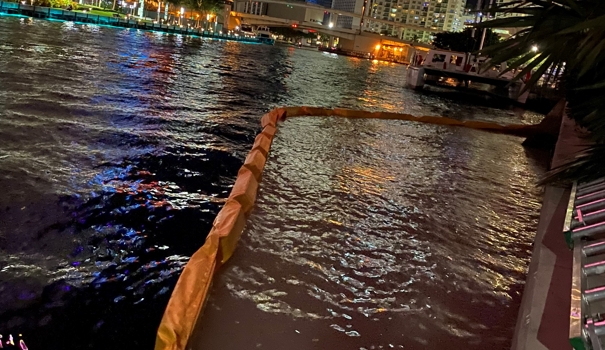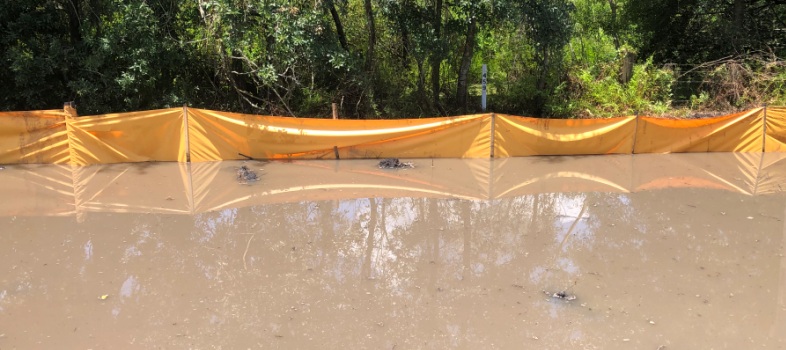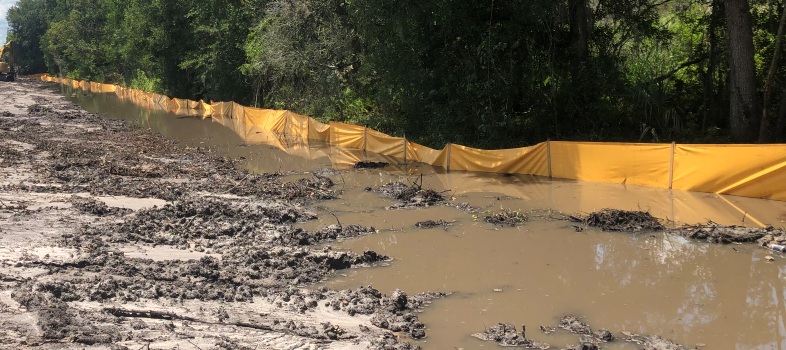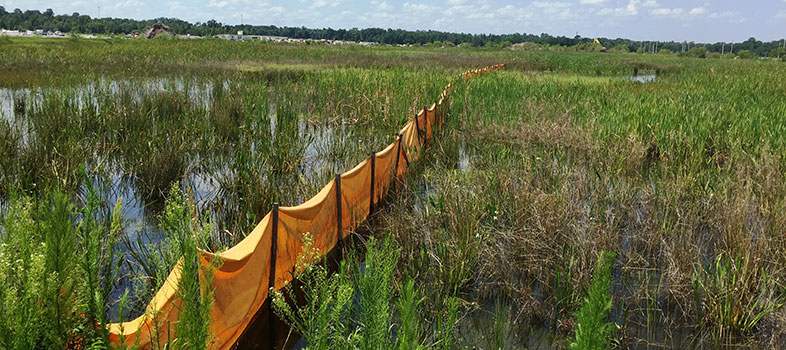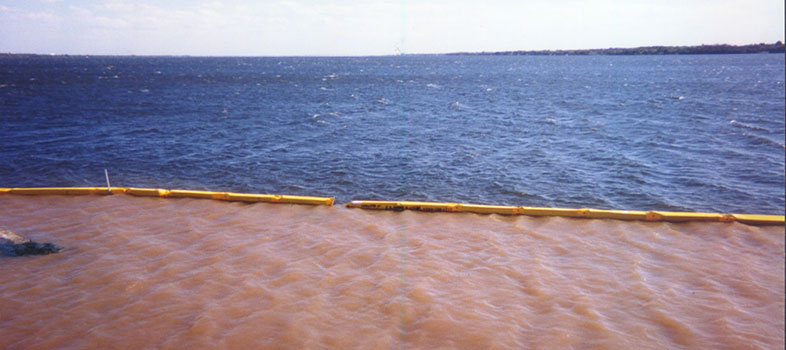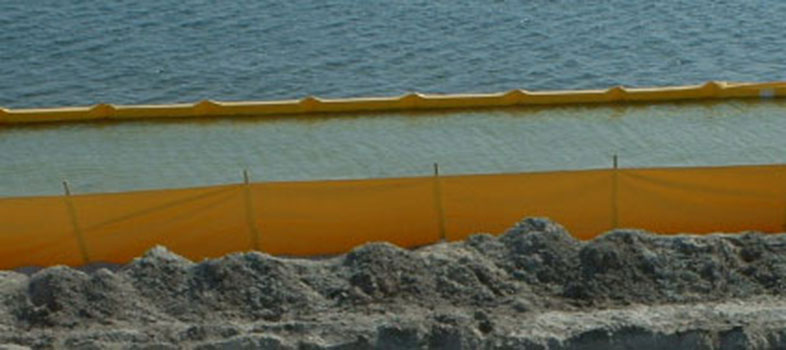Floating & Staked Turbidity Barriers
Floating Turbidity Barriers
Type I is the most frequently specified barrier in the TOUGH GUY® line. It is recommended for construction sites located in protected areas that are exposed only to light winds and to current velocities of less than one foot per second. This type of site may include ponds, shallow lakes, small streams and marshes. Anchorage consisting of stakes or concrete blocks may be required to keep the barrier in its position. Barrier sections can be connected using rope lacing or nylon zip ties, which are furnished separately.
Type II is the work horse of the TOUGH GUY® line and is designed to handle more severe conditions. It has a top load cable and special stress plates for reinforcing the corners. It is recommended for lakes, streams, intercoastal and tidal areas where current velocities up to five feet per second are expected. The anchorage and installation must be designed to meet site conditions. Barrier sections can be connected using rope lacing or nylon zip ties, which are furnished separately
Type III is a special adaption of the Type II barrier. Approximately 20% of the area of the barrier skirt fabric is replaced with a polypropylene filter fabric conforming to some state DOT specifications. The filter fabric is inserted to reduce the pressure on the curtain while retaining silt. In actual practice, a filter fabric that is woven tightly enough to retain silt will not significantly reduce pressure on the curtain. Conversely, if the filter fabric is woven loose enough to reduce the pressure on the curtain, it will not be able to retain most silt and sediment particles.
Staked Barriers
Staked Barriers are continuous fabric panels used to contain run-off on the site or direct it to retention devices. The fabric curtain has a heat sealed hem along the top edge and is approximately 44 inches wide. A narrow trench 8 inches deep is dug along the perimeter line and stakes are driven every 6 feet along the down slope side of the trench. The upper portion of the barrier is attached to the stakes with staples, wires or nylon ties, keeping the top of the barrier 36 inches above grade. The lower edge of the curtain is placed in the trench which is then backfilled. This system works best in porous soils on moderately sloped sites. Barriers are sold as fabric only or with wood stakes attached. Metal t-posts can also be used for on-site assembly.
- Geotextiles
- TenCate Mirafi Geotextiles N-Series & X-Series
- TenCate Mirafi Geotextiles S-Series
- TenCate Mirafi Geotextiles FW-Series
- TenCate Mirafi Geotextiles HP-Series & PET-Series
- TenCate Mirafi Geotextiles RSi-Series & H2Ri-Series
- TenCate Mirafi Geosynthetics MPV, MPG (PGM-G), and MPG4 (PGM-G4) Paving Fabrics
- Sediment Control & Construction Site BMPs
- Silt Fence
- Straw Wattles
- Floating & Staked Turbidity Barriers
- Applied Polymer Systems Polyacrylamides (PAM)
- Applied Polymer Systems Floc Logs
- Link Manifold System
- Floc Pit System
- Hach Portable Turbidimeter
- Dewatering Bags
- Curb Inlet Protection
- Drop Inlet Protection
- Sand, Sand-Cement & Rock Bags
- Rattle Grate Trackout Control
- FODS Trackout Control Mat
- Outpak Universal Portable Washout
- Erosion Control
- Hydroseeding Mulches
- North American Green Biodegradable Blankets
- North American Green Temporary Erosion Control Blankets
- North American Green Permanent Turf Reinforcement Mattings
- InstaTurf High Performance Erosion Control Mats
- Presto Geosystems Perforated GEOWEB
- Flexamat Concrete Mat Systems
- ARMORFORM Fabric-Formed Concrete Revetment Systems
- Maccaferri Reno Mattresses
- Tencate Geotubes for Shoreline Protection
- Geotextile Tubes for Lake Embankment
- Silt Fence
- Bioengineering Solutions
- Subgrade Stabilization & Load Support
- TenCate Mirafi Geotextiles RSi-Series & H2Ri-Series
- Tensar Biaxial (BX) Geogrids
- Tensar TriAx (TX) Geogrids
- Tensar InterAx (NX) Geogrids
- TenCate Mirafi Geosynthetics MPV, MPG (PGM-G), and MPG4 (PGM-G4) Paving Fabrics
- Presto Geosystems GEOWEB for Load Support
- Presto GEOPAVE
- Presto Geosystems GEOBLOCK & GEOBLOCK5150
- Presto GEOTERRA
- Presto GEORUNNER
- Soil Retention Drivable Grass
- EcoBlock (EB) Recycled Plastic Turf Block
- FODS Trackout Control System
- AGES Mud Mats
- Mud Control Grids
- Slope Reinforcement & Retaining Walls
- Drainage & Stormwater
